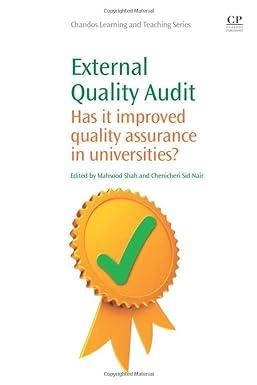Question
. Project A costs $6,000 and will generate annual after-tax net cash inflows of $2,150 for five years. What is the payback period for this
| . | Project A costs $6,000 and will generate annual after-tax net cash inflows of $2,150 for five years. What is the payback period for this investment under the assumption that the cash inflows occur evenly throughout the year? (Round your answer to 2 decimal places.) |
| b. | Project B costs $6,000 and will generate after-tax cash inflows of $600 in year one, $1,400 in year two, $2,500 in year three, $3,000 in year four, and $2,500 in year five. What is the payback period (in years) for this investment assuming that the cash inflows occur evenly throughout the year? (Round your answer to 2 decimal places.) |
| c. | Project C costs $6,000 and will generate net cash inflows of $3,000 before taxes for five years. The firm uses straight-line depreciation with no salvage value and is subject to a 20% tax rate. What is the payback period? (Round your answer to 2 decimal places.) |
| d. | Project D costs $6,000 and will generate sales of $5,200 each year for five years. The cash expenditures will be $2,100 per year. The firm uses straight-line depreciation with an estimated salvage value of $650 and has a tax rate of 20%. (Round your answer to 2 decimal places.) |
| (1) | What is the book rate of return based on the original investment? | |
| (2) | What is the book rate of return based on the average book value? | |
| e1. | What is the NPV of project A? Assume that the firm requires a minimum after-tax return of 10% on investment. (Round discount factor(s) to 3 decimal places. Round your answer to the nearest whole dollar amount.) |
| e2. | What is the NPV of project B? Assume that the firm requires a minimum after-tax return of 10% on investment. (Round discount factor(s) to 3 decimal places. Round your answers to the nearest whole dollar amount.) |
| e3. | What is the NPV of project C? Assume that the firm requires a minimum after-tax return of 10% on investment. (Round discount factor(s) to 3 decimal places. Round your answer to the nearest whole dollar amount.) |
| e4. | What is the NPV of project D? Assume that the firm requires a minimum after-tax return of 10% on investment. (Round discount factor(s) to 3 decimal places. Round your answer to the nearest whole dollar amount.) |
Step by Step Solution
There are 3 Steps involved in it
Step: 1

Get Instant Access to Expert-Tailored Solutions
See step-by-step solutions with expert insights and AI powered tools for academic success
Step: 2

Step: 3

Ace Your Homework with AI
Get the answers you need in no time with our AI-driven, step-by-step assistance
Get Started


